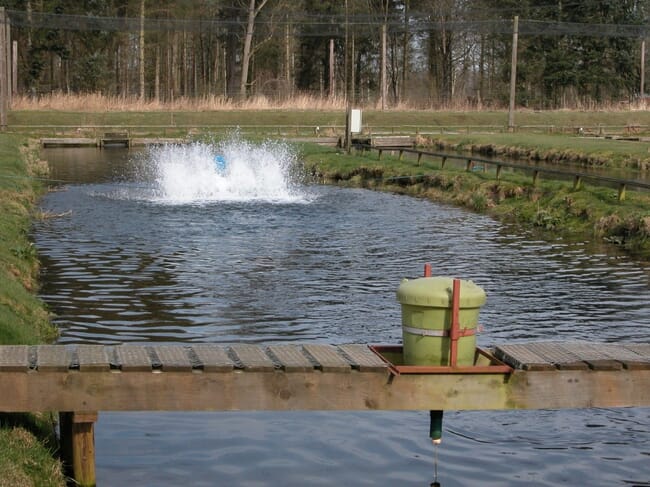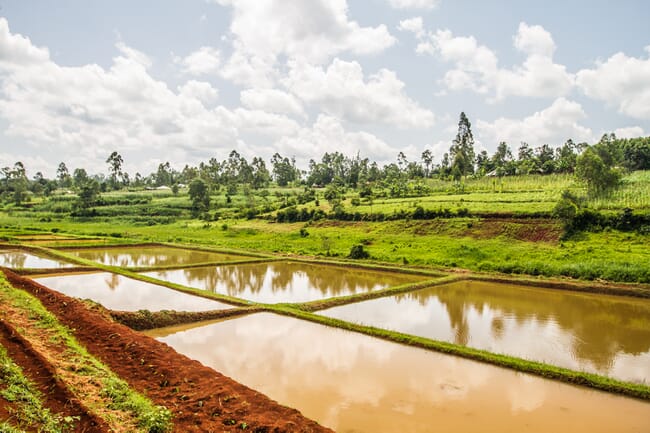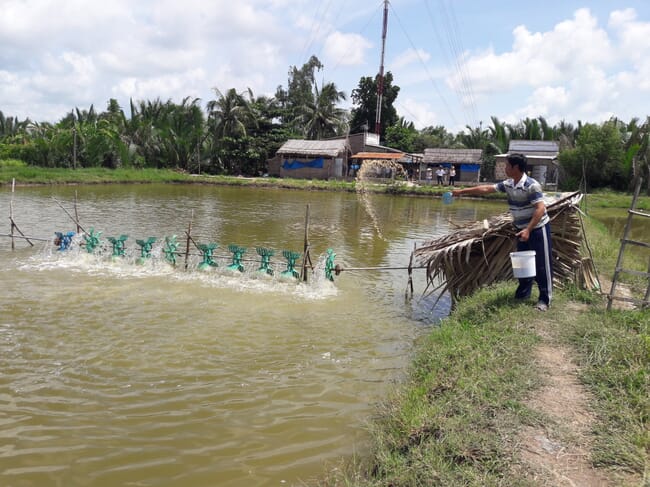Such methods can dramatically reduce water use, feed use, disease, medication and nutrient effluents in wastewater, while increasing yields and survival rates, according to a new paper in Reviews in Aquaculture.
What is ecological engineering?
Ecological engineering is a design method that applies the principles of species symbiosis along with material recycling and regeneration. The idea is that man-made structures can stimulate and control the environment to produce supplementary energy – after this energy has been generated, humans can use it to sustainably achieve production outputs.

Proponents of ecological engineering tout its environmental advantages: compared to traditional pond aquaculture, ecological engineering methods can nearly halve water use and dramatically decrease nutrient effluents in wastewater. The improved production efficiency increases yields and survival rates, while reducing feed inputs. Other downstream benefits include decreased disease incidence and medication use, as well as improved labour efficiency.
The two main methods of ecological engineering in aquaculture involve building facilities or designing production systems for use on farm sites. These techniques address a myriad of ecological concerns from erosion, water purification, pollution reduction and environmental remediation.
Building ecological facilities
Eco-slopes
Eco-slopes are used next to fishponds to reduce slope instability and collapse. They are created by using plants and non-living plant materials to make a three-dimensional vegetation net that reduces bank erosion. Researchers found that the vegetation emulates the ecological characteristics of wetlands – purifying the water and regulating subsurface flow.
Most studies on eco-slopes have found that they effectively prevent soil erosion, protect pond banks and can intercept and rectify agricultural pollution. Other studies have shown that eco-slopes can significantly improve water quality and reduce the total nitrogen and phosphorous loads in ditches.
Eco-ditches
Eco-ditches are ditches that have been sectioned and modified to naturally filter and purify water run-off. Construction of eco-ditches usually involves modifying the bottom and full length of the ditch into sections that contain different aquatic plants or animals that provide ecosystem services for the water in the ditch.
Though multiple studies have found that eco-ditches can help ameliorate eutrophication in culture water, the researchers stress that sediments in the ditch need to be drained and treated to prevent pollutant build-up. They also note that the restorative potential of eco-ditches is largely dependent on the plants and animals they contain. Farmers will need to actively manage eco-ditches to make sure they are reaping the full benefits of the design.
Eco-ponds
Eco-ponds are a sustainable way of treating sewage and use aquatic plants, fish from multiple trophic levels and waterfowl to form a complex ecosystem and a complete food chain. The idea is that farmers can position eco-ponds next to production ponds and rely on the natural processes to filter sewage and run-off from aquaculture production.

The main eco-pond technique is the high-rate algal pond (HRAP). Multiple studies have shown that HRAPs can successfully manage and regulate water ecosystems. HRAPs remove more nitrogen and phosphorous than conventional wastewater treatment, and also have shorter hydraulic retention times than general wastewater treatment. Researchers suggest using one eco-pond per three to seven aquaculture production ponds for best results.
Eco-floating beds
Eco-floating beds (or biological floating islands) are small masses of plants that sit on top of culture water and assist in water purification. Eco-floating beds rely on the aquatic plants and their root microorganisms to reduce pollutants and remediate eutrophic water. The review found that more than 80 types of plants can be used in eco-floating beds, including food crops, vegetables, flowers, perennial herbs and grasses like water spinach (Ipomoea aquatica).
Ideally, the root systems of the plants should host organic matter, shellfish, snails or other common aquatic organisms. This increases the oxygen load in the water, breaking up biofilms and organic pollutants while providing a dense matrix for water to filter through. Studies suggest that producers will see best results if floating beds cover 20 percent of the water area in the culture pond.
Designing ecological production systems
Composite and constructed wetlands
Constructed wetlands are based on the structure of natural wetlands and rely on the same chemical filtration and ecosystem frameworks to treat sewage. Initial evaluations of the system suggest that constructed wetlands can remove heavy metals and antibiotics from aquaculture water.
Composite wetlands integrate the advantages of constructed wetlands but have a more efficient and flexible treatment effect on the surrounding environment. The researchers found that using composite wetlands to treat aquaculture wastewater had multiple advantages. In side-by-side trials, water that was treated in a composite wetland system had improved quality indicators and had lower cyanobacterial blooms. In addition to removing total suspended solids, nitrogen and other eutrophic nutrients from culture water, the system can support plants that can be used for livestock feed.
China tests the waters
China’s pond aquaculture enterprises have embarked on multiple ecological engineering initiatives since the early 2000s. Projects have been successfully implemented in lakeside buffer zone habitats like Tiahu Lake, Gehu Lake and Weishan Lake. The researchers also highlighted successful projects in riverbank areas and water deficient regions. Eco-engineering systems can be implemented in saline and alkali water environments. Initial estimates found that pond-based fish farms that adopted the systems increased the re-use rates of nitrogen and phosphorous by more than 50 percent, while improving their economic bottom line.

© Olivier Joffre
The literature found that both finfish and crustacean producers could successfully implement eco-engineering designs to save water and energy. They highlighted one unsuccessful study on a common carp farm, but this case study appears to be an outlier.
The review demonstrates that ecological engineering is an effective way to sustainably expand China’s aquaculture sector. However, producers must carefully research and eco-engineered facilities or systems they wish to implement. The methods are highly specific and return on investment will vary, depending on the species being farmed and the surrounding ecology.
The researchers also stress that China needs to establish uniform management standards for the aquaculture industry. This will ensure that ecological sustainability remains a priority as aquaculture production increases.




